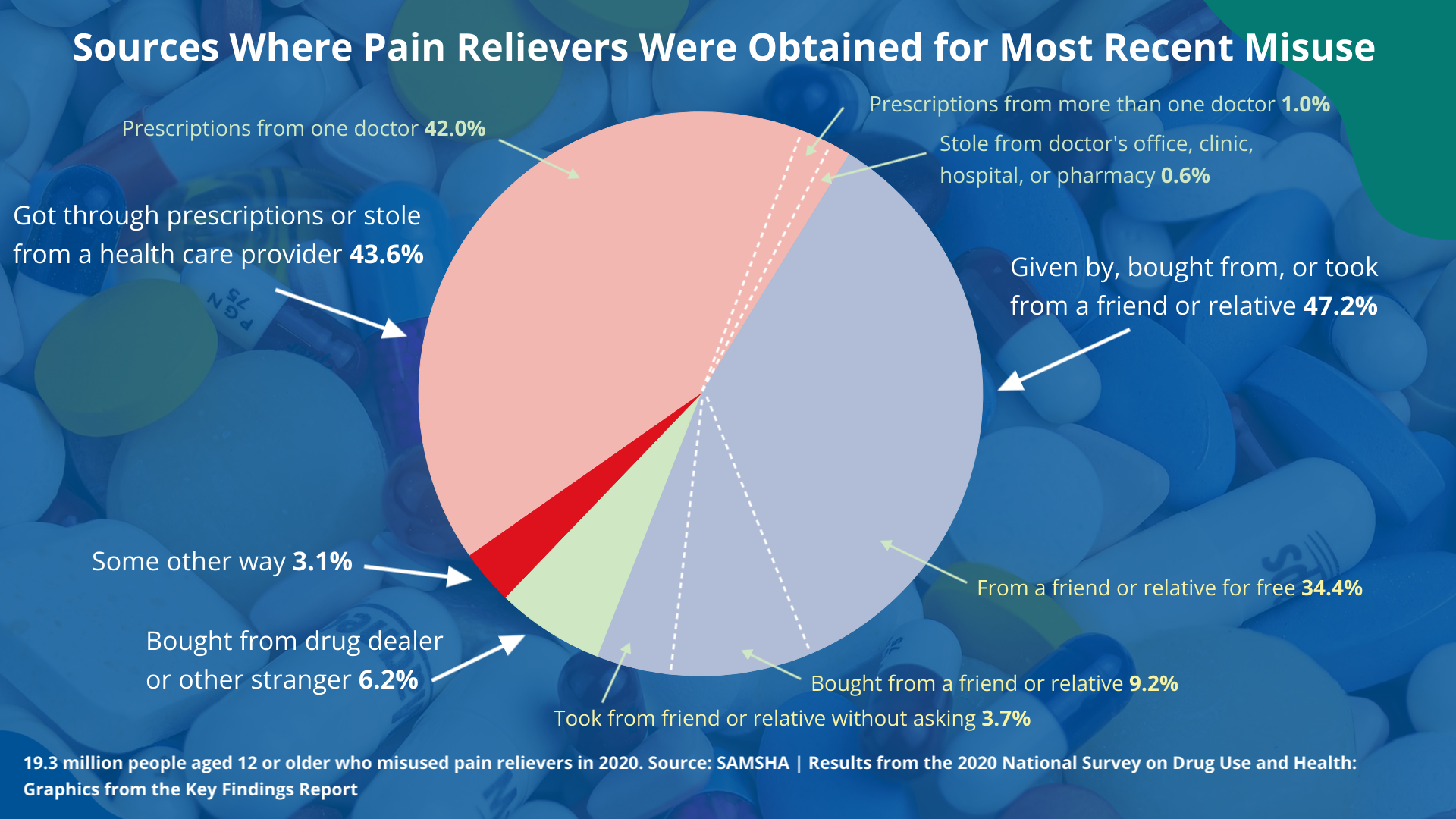Opioids 101
History and Terminology
Substance misuse keeps people dis-empowered by reinforcing racism, poverty, isolation, a broken self, broken families, and devastated communities. The health of an individual, particularly a parent, is directly related to the health of our children and families, the neighborhood in which we live, and society at large.
Terminology
Opioids are natural or artificial chemicals that interact with nerve cells in the body and brain to reduce the intensity of pain. Opioids may be prescribed — or bought illegally. They are highly addictive.
Prescription opioids, when legally prescribed by a doctor and used as directed, can relax the body, and relieve symptoms of an illness, injury, or surgical procedure. For example, they may be used to lessen postsurgical pain or severe pain due to trauma or disease.
Opioid misuse is when people use opioids in any way other than prescribed. Misuse may be in a manner, situation, amount, or frequency that can cause harm to self or others. An overdose is when a person hurts or poisons him- or herself by taking too much of a drug. An overdose may cause respiratory failure, leading to coma, brain damage, and/or death.
More definitions are available in Appendix B.
Opioid Basics
Common Names
Slang Terms
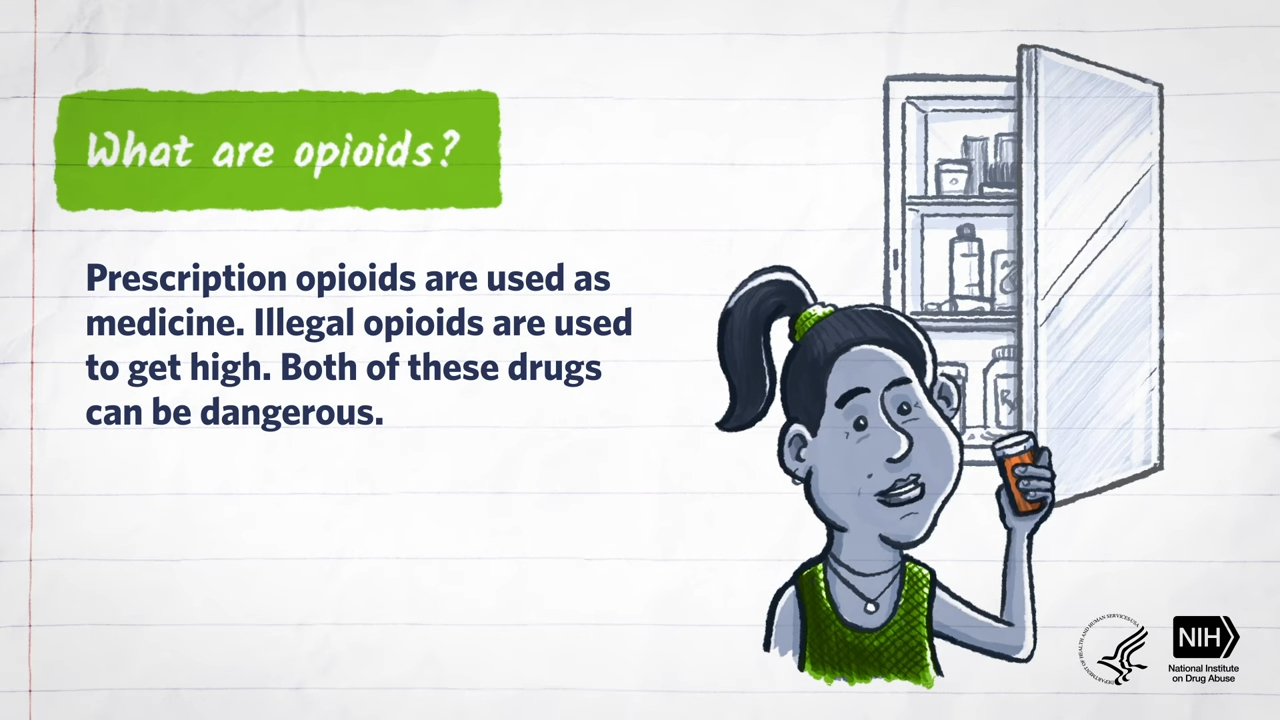
What Happens When Our Brains Are Hooked on Opioids?
Our brains decide what gives us pleasure. The way this occurs is through our neurons — nerve cells in our brain that send messages all over our body, much like a general directing his troops. These messages allow us to do everything — breathing, talking, eating, and thinking.
The brain sends and receives chemical and electrical signals throughout our body. Different signals control different processes, and our brain interprets each. Now, think of a coach calling the plays for a game. Some signals, for example, make you feel tired, while others make you feel pain.
Some messages are kept within the brain, like in the coach’s playbook, while others are relayed through the spine and across the body’s vast network of nerves to distant parts of the body. The body has its own Uber system – the central nervous system, to get these messages out and relies on billions of neurons (nerve cells) — the Uber drivers.
The brain has many players, including the GABA neurons. These are the best players. They are the gatekeepers and decide what gets into your brain. GABA neurons can slow down the messages your brain gets, which regulates your mood and anxiety. If GABA can’t do its job, you might have problems with mental health.
When a person takes opioids, these drugs hold back the GABA neurons. They can’t get out on the field. So, the home team, dopamine, another messenger group of neurons, can’t get onto the field. Dopamine does a lot of things when it’s able to circulate in our body. It gives us pleasure and is also responsible for many other things that we take for granted: learning, motivation, heart rate, sleep, and control of nausea and vomiting, among many other roles. So, if the dopamine routes are blocked, the body tries to do an end-run around the problem but gets blocked.
When opioids block or shut out the GABA neurons, the dopamine neurons demand attention. They lure the person to increase the opioids because they feel so good. So, the GABA can’t do its job of regulating the mood and other important duties of the body. Just like the coach would bench a player who showed up drunk, the brain on opioids is like that drunk player — unable to make the needed plays.
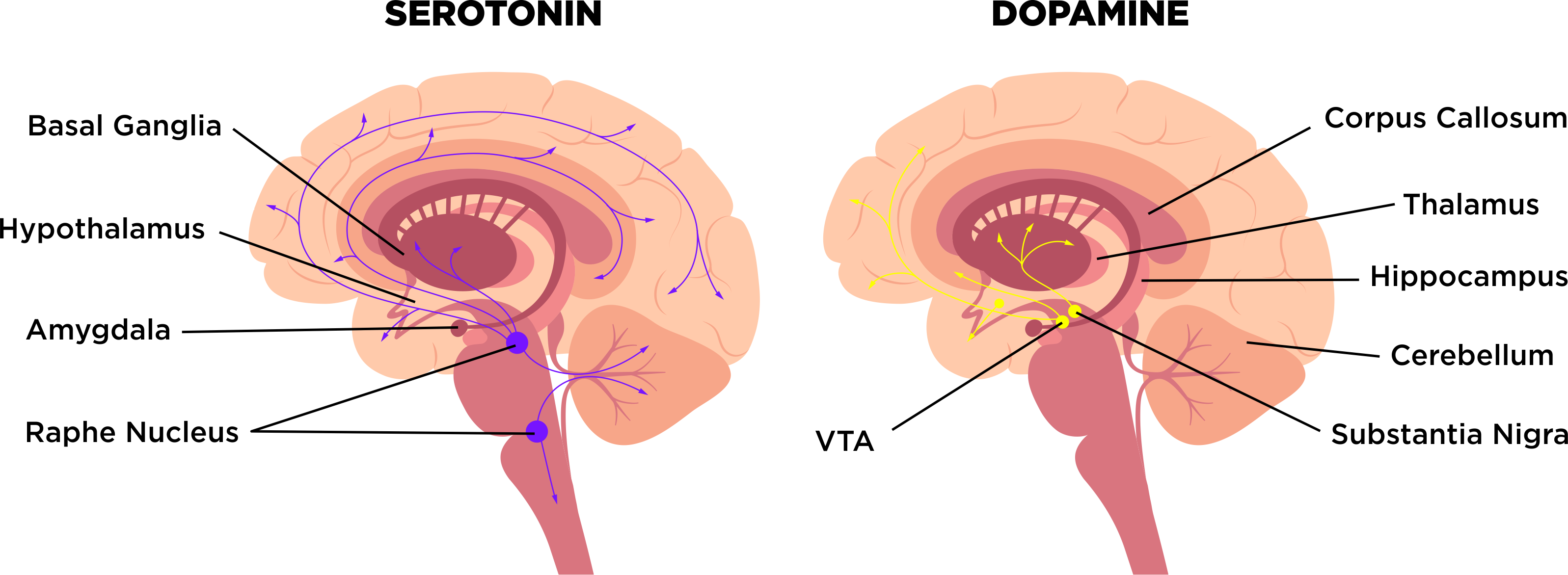
- Reward (motivation)
- Pleasure, euphoria
- Motor function (fine-tuning)
- Compulsion
- Preservation
- Mood
- Memory processing
- Sleep
- Cognition
There are healthy ways to increase our dopamine level, so we feel good (Julson, 2022), like getting enough sleep, eating well, listening to music, and walking outdoors. When we reward our brain with dopamine, the craving for addictive opioids is reduced or may disappear.
Healthy Brain
to reveal changes
Brain on Opioids
Healthy Brain vs. Brain on Opioids
The image comparison shows a healthy brain scan and a brain scan from a 38-year-old person who has used opioids for seven years.
The wavy appearance of the image on the right indicates oxygen and blood flow restriction, often referred to as “scalloping” or perfusion. It is associated with opioid misuse.
Source: Frontiers in Psychology
What Happens to Your Brain on Opioids
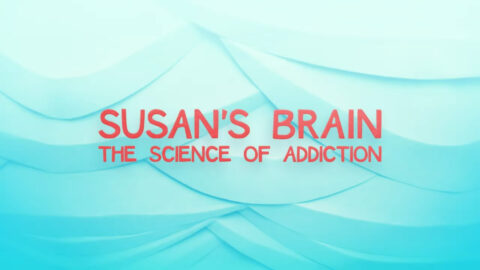
How a Brain Gets Hooked on Opioids
Brain Reward Pathway
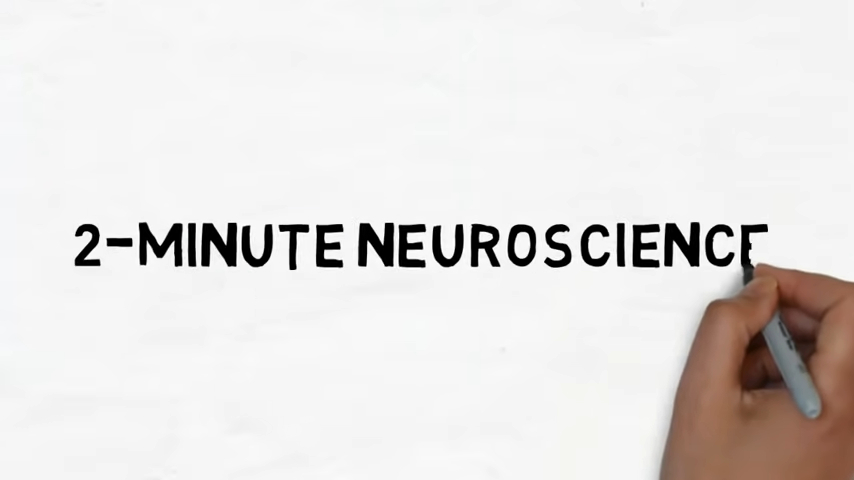
How Opioids Affect a Person
- Opioids are not meant for long-term use. They change the brain’s chemistry and lead to drug tolerance, which means a person must take a higher quantity or use it over longer periods to get the same effect.
- Some people become dependent on the drug. When they stop taking it, they experience withdrawal (Shah & Hucker, 2022). Opioid withdrawal occurs when someone dependent on opioids suddenly reduces or stops taking opioids. A person withdrawing from opioids needs treatment because withdrawal may be difficult or life-threatening. Signs of withdrawal may include muscle cramping, diarrhea, and/or anxiety.
- A small percentage of people become addicted. They experience a compulsive and continued need for the drug.
Where Do Opioids Come From?*
* Numbers may not add up due to rounding.
Prescribing one of these is considered best practice as a part of treatment for opioid use disorder.” https://ssc.jsi.com/resources
Some doctors prescribe more opioids than you need.
Know that most people overdose from fentanyl than any other opioid.
Many do not know fentanyl is in their drugs because drug dealers do not tell you the truth.
Safeguarding Prescription Opioids
At times, people are prescribed more pain medication than they need. Misuse of opioids or other drugs may occur when someone has a leftover prescription at home. You can properly dispose of extra medication by taking it to a drop box.
-
Permanent drop boxes are located at police substations. The sheriff’s office collects opioids twice a year. You can also take them to the Justice Center downtown, the NCCU substation, or Carolina Behavioral Health Pharmacy (paid for by TRY).
-
There is a drop box at the Health Department.
https://www.morepowerfulnc.org/get-involved/pill-disposal/
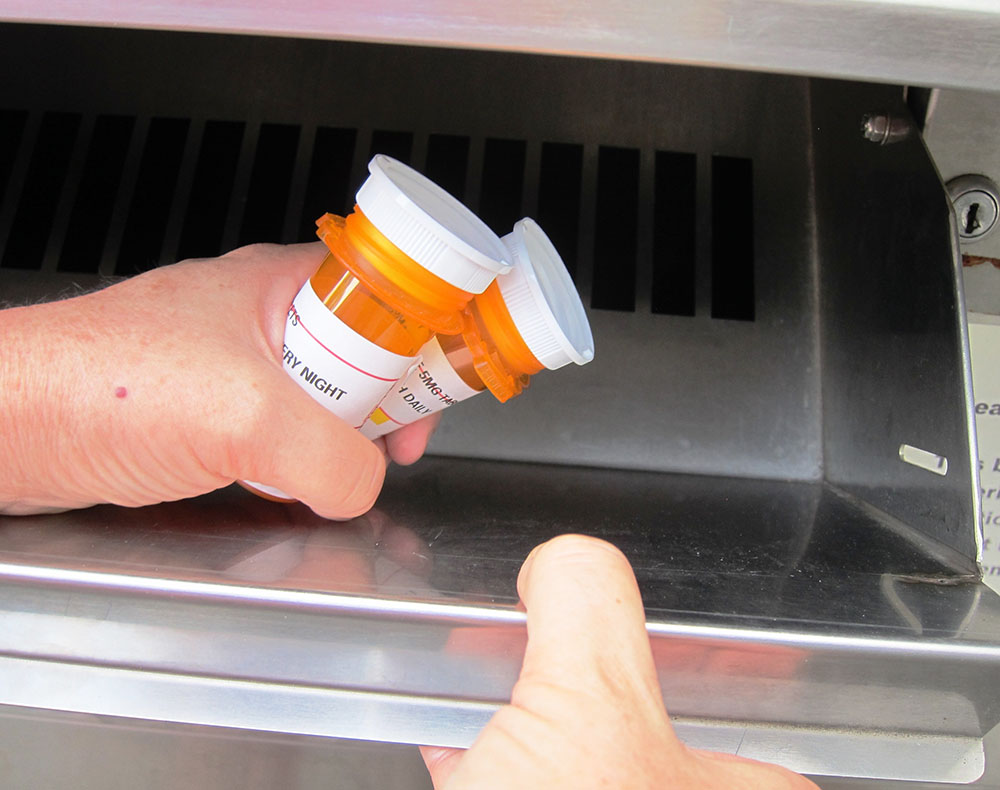
Resources
Helpful Information for Providers
Symptoms of opioid withdrawal may be life-threatening. The Clinical Opioid Withdrawal Scale (COWS), consisting of 11 commonly seen signs and symptoms of opioid withdrawal, helps staff determine the severity of opioid withdrawal and see if the patient needs extra help (American Addiction Centers Staff, February 15, 2023).
What is Precipitated Withdrawal?
Precipitated withdrawal is the rapid and intense onset of withdrawal symptoms initiated by medication as part of addiction treatment. One measurement of this is the Clinical Opiate Withdrawal Scale (COWS). See also American Society of Addiction Medicine, 2021; Dunn et al., 2023).
Test Your Knowledge (answer yes or no)
1. Opioids have no medical use.
No. Opioids when used as directed by a physician or healthcare professional can relax the body and relieve pain.
2. Opioid misuse means taking too much of a prescribed drug.
Yes. This is one type of misuse and too much of a prescribed drug can cause problems of addiction.
3. An opioid overdose can cause us to die because we can’t catch our breath.
Yes. If we don’t die of an overdose, we may get into a coma or get very sick from too much of the opioid.
4. Some slang terms for opioids include: apache, scag, china white, and perc.
Yes. There may be many other terms in your area and these names change frequently. You should know what these names are so if you take any street drug, you are aware of what you are getting. Some of these terms are also used for fentanyl and include: Apache, China girl, China town, dance fever, friend, goodfellas, great bear, he-man, jackpot, king ivory, murder 8, poison, tango and cash, and TNT.
5. Besides taking drugs to feel good, we can increase our dopamine levels by doing many other things.
Yes. Some of the ways to up your dopamine level include: getting enough sleep, walking outdoors; and having consensual sex.
